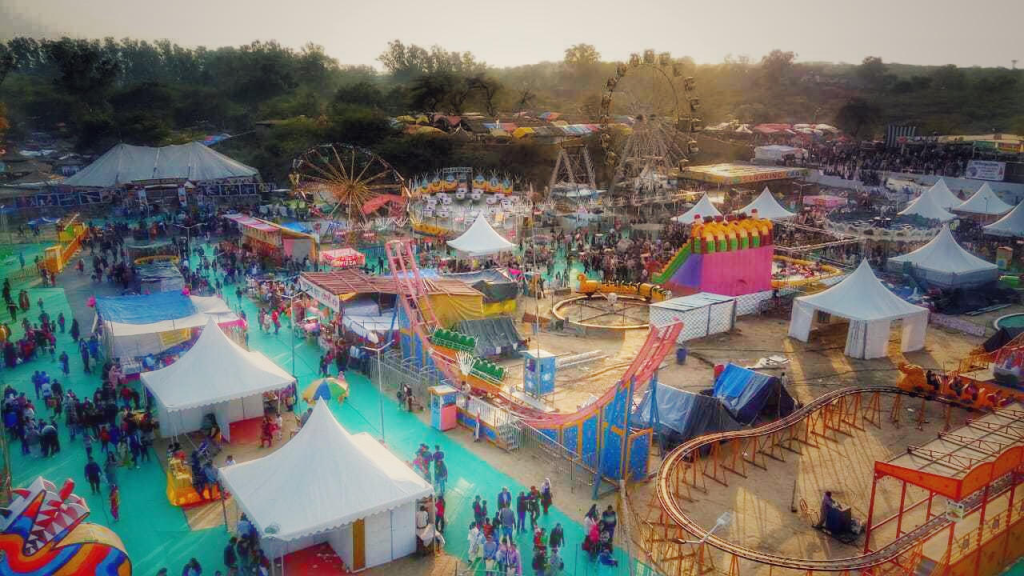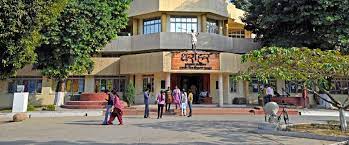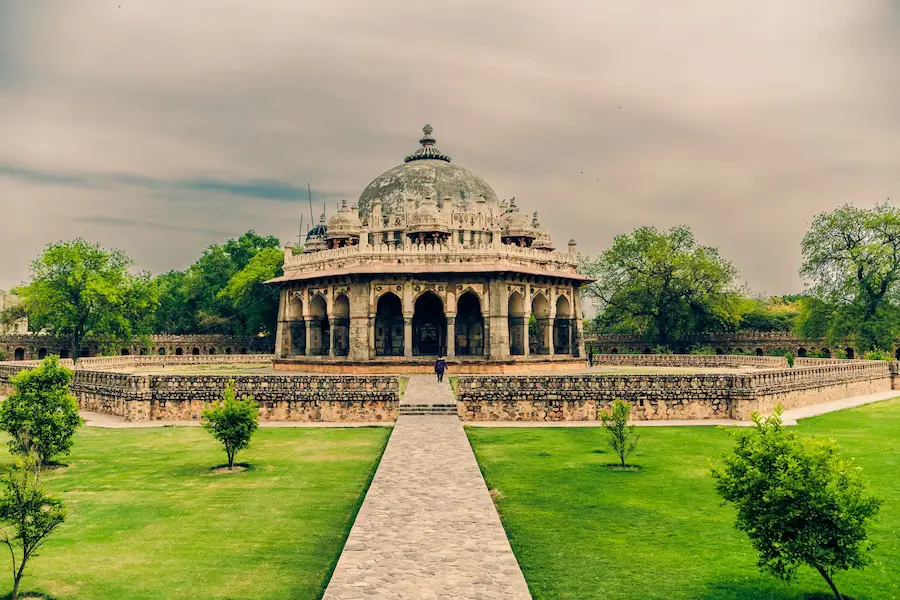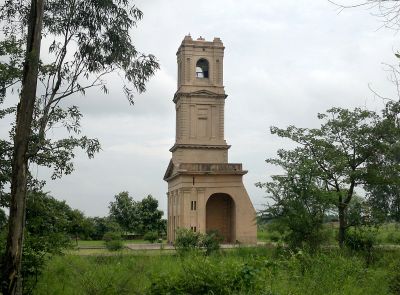Explore Haryana

Collection Items
-
Gurukul, Jhajjar Museum Museum
It is the biggest museum in Haryana. The committed and passionate effort of Swami Omanand Saraswati in collecting antiques from various parts of the country brought this museum into being in 1959. The huge museum has antique coins and beautiful variety of idols.
The major attractions are idols of Panchwati’s deer statue (referring to Sita’s kidnapping), Lord Vishnu, and Lord Ganesha. Meticulously and tactfully made wooden chain with no joints and a unique ‘flexible’ stone are worth-seeing.
-
Pandvas Bhimeshwari Goddess
According to a legend, the idol of the goddess was installed by Bhima, one of the Pandavas. Before Mahabharata battle, Bhima wanted to have blessings of Kuldevi. Yudhishthira and Bhima went to Hinglay Mountain (now in Pakistan) and prayed Kuldevi to move to the battle field and bless them with victory. The Kuldevi accepted the plea with the condition that Bhima will not drop her down on the way from the his lap and if he does so, she will go no further from that place.
While on way Bhima placed the idol of Goddess under the Beri tree and as per the condition, Kuldevi remained there. Unfortunately Bhima had to go to Kurukshetra battle only with blessings of Kuldevi. After 18 days of the war, a marvellous temple was built here
-
Braham Sarovar
Braham Sarovar, as the name suggests, is associated with Lord Brahma, the creator of the Universe. Taking dip in holy water of sarover during Solar Eclipse is considered equal to the merits of performing thousands of Asvamedha Yajnas. According to Local Legends this tank was first excavated by King Kuru the ancestor of Kauravs & Pandavas. Having seen its huge water body Abul-Fazl the courtier of Mughal emperor Akbar during solar eclipse has described the vast water body of this sarovar as miniature Sea. According to the local tradition a tower was erected by Yudhistar in the island situated in the middle of sarovar as a token of his victory in the Mahabharta battle. In the same island complex lies a ancient Draupadi kupa. The shrine of Lord Shiva located on the northern bank of the sarovar is called Sarveshwar Mahadev. According to the tradition, the Shiva Linga was installed here by Lord Brahma himself. Annual Gita Jyanti celebrations is held on banks of bramsarover in November-December. Many devotees consider one prikarma of this tank equal to making one visit to all the tirth lying within the holy circuit of Kurukshetra 48 Kos. -
Birbal Ka Chhatta
This spacious building, built by Ray-i-Rayan Mukand Dass, the Diwan of Narnaul, during the reign of emperor Shah Jahan (1628-58 A.D.) is dexterously planned and embellished, though its exterior is unostentatious and drab. It is a five-storied structure with several halls, rooms and pavilions. The extensive open terrace on the south, elliptical pavillions on different levels, halls on pillars and running verandah around a central court, once adorned with a marble fountain, impart spaciousness and light to it. The profuse use of marble for veneering, pillars and brackets, provided with artificial cataracts and drains, make it a cosy retreat during the tropical summers.
In the south-eastern corner on the terrace, there is a dilapidated well, from which the water was raised into reservoirs, at various levels. An exquisite and isolated gateway-complex, well provided with projecting balconies and marble veneering stand a few metres to the west of the palace. This is said to have been the main entrance to the complex.
It said that Akbar and Birbal visited this town and that is why this structure Chhatta Rai Mukand Das is also popularly known as Chhatta of Birbal.
At a small distance from the Chhatta lies the Sarai Rai Mukand Das. The building bears an epigraph, which states that during the reign of Shah Jahan, Rai-Rayan Mukand Das, a servant of Nawab Asif Khan, built the lofty building under the super vision of Mehta Puran Mal Hari Dass. -
Baoli Ghaus Ali Shah
Baoli In Farrukhnagar, Gurugram district, Haryana, India, there is a stepwell from the 18th century called Ghaus Ali Shah, also called Ghaus Khan ki Baoli.[1] Built by local lord Ghaus Ali Shah, who worked for the Mughal Emperor Farrukhsiyar, it was commissioned during his rule.
The baoli was constructed as a high point for monitoring the region and as a permanent supply of fresh water that was out of the enemy's reach and could not be spoiled or poisoned. -
Nabha House
This monument was used by the royal family members for stay during the days of religious performances at Kurukshetra. The building stands on a raised platform. The entrance gate is on the eastern side and its either sides are decorated with four arched niches (Miharab). There are two beautiful pillared windows (Jharokha) on the second floor of the building. The base and the top of these pillars have been decorated with lotus design. A temple dedicated to God Brahma is constructed on the top of the monument. It is fifteen-feet tall and built on Navaratha (nine corners) plan. The wooden door on entrance is studded with decorative iron nails, which represent the Hindu style of architecture in early British era. The main entrance through another gate leads to a rectangular courtyard. The stairs on the southern side of the courtyard lead to the temple on the second storey. -
Shahjahan Ki Baoli
The Shahjahan ki baoli, also known as the Choron ki baoli, is located near Maham, Haryana, India. The building, built during Emperor Shah Jahan's reign, catches and stores rainwater for the nearby town of Maham. While the baoli is no longer in common usage, it has survived as a tourist attraction. -
Ramrai
Located on Jind-Hansi road, 8 kms. west of Jind, Ramrai is also known with another name, Ramaharda.It is said that Kshatriyas were annihilated, so Parsurama propitiated his ancestors by filling five pools with the blood of slaughtered Kshatriya. Ample number of people bathe at Ramaharda ‘tirtha’ and Sanet ‘tirtha’. Many people come to worship Parsurama at his old temple.
-
Topiyon Wala Gurudwara
The place is equally interesting as its name. The Gurudwara has a unique combination of Hinduism and Sikhism. Interestingly, Shri Guru Granth Saheb and Ramayana are recited together at this Gurudwara
Collection Tree
- Explore Haryana

















